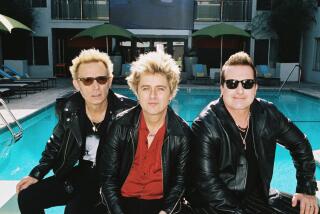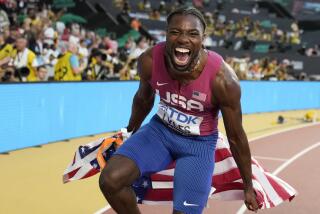Lance Armstrong’s legacy
Thursday night’s bid for absolution by cyclist Lance Armstrong over his use of performance-enhancing drugs — set to continue Friday as OWN founder and TV high priestess Oprah Winfrey seeks to bless her struggling network with ratings points — is, depending on the beholder, either a scoundrel’s disgraceful and far-too-late effort to salvage his career or the last gasp of a hero aiming to silence the critics who have unfairly singled him out.
Our view leans slightly to the former, although we believe the man who was once the world’s most successful cyclist has achieved at least one worthwhile and inspiring thing: his Livestrong cancer foundation. If a couple of appearances with Oprah can keep the donations flowing to a worthy cause, chat away.
But what matters more than our view on Armstrong is the way he and his actions are seen by millions of other athletes — young and old, amateur and professional — who might be tempted to follow in his footsteps. Investigators have long tended to focus on landing big fish to discourage those who might want to imitate them. Armstrong, because of his massive endorsement deals, seemingly impossible achievements and enormous fame as the man who almost single-handedly put cycling on the American sports radar screen, may be the biggest fish ever caught by doping officials. Will that be enough to help put this chemical-abuse era behind us?
PHOTOS: Lance Armstrong through the years
Not judging by a recent decision by the Union Cycliste International, the Switzerland-based governing body for cycling. According to a report in the Wall Street Journal, the union rejected a proposal from anti-doping authorities to create a one-month window during which cyclists could have admitted drug use without facing bans on international competition. The union reportedly nixed the idea of such a “truth and reconciliation commission” because it believes cycling has already been singled out for special attention, and another flurry of confessions would have further tarnished the sport’s reputation.
Surely other sports have gotten the message? Not baseball. No one was elected to the Hall of Fame in Cooperstown this year, largely because so many of the biggest stars of the last decade or two (Barry Bonds, Roger Clemens, Sammy Sosa, etc.) have been tainted by steroid scandals. Major League Baseball has reportedly cleaned up its act since the days when Bonds was hammering superhuman homers into McCovey Cove, with officials recently announcing that it will be the first of the four major North American pro sports to test for human growth hormone during the season. But wasn’t it just last summer that Melky Cabrera of the San Francisco Giants and Bartolo Colon of the Oakland A’s were suspended for using synthetic testosterone?
The problem gets less attention in basketball and football, but not because it doesn’t exist. Muscles go with the job for athletes in these sports, and the public seems less bothered when those gladiatorial bodies were built with the help of a syringe.
Indeed, many believe that doping shouldn’t matter even for athletes such as Armstrong who compete in non-contact sports. If elite athletes want to entertain us, and maximize their own fame and fortunes, by taking substances that harm only themselves, why should anyone else care? First, because doping creates an uneven playing field in which cheaters have the distinct advantage. Allowing it would merely encourage everyone else to do it as well. Second, because sports are supposed to test the limits of human strength, agility and skill, not the talents of one’s chemist or trainer. Third, and most important, because young people fall into the trap of thinking they need performance-enhancing drugs to succeed, turning kids into chemical abusers, with all the risks that entails.
Armstrong’s come-to-Oprah moment, unfortunately, probably won’t do much to reduce doping, even if it helps restore his reputation. And if the fall of the mighty Armstrong won’t get athletes off the juice, what will? More enforcement and better detection methods are the mundane, but seemingly only, answers.
More to Read
Get the L.A. Times Politics newsletter
Deeply reported insights into legislation, politics and policy from Sacramento, Washington and beyond. In your inbox three times per week.
You may occasionally receive promotional content from the Los Angeles Times.










